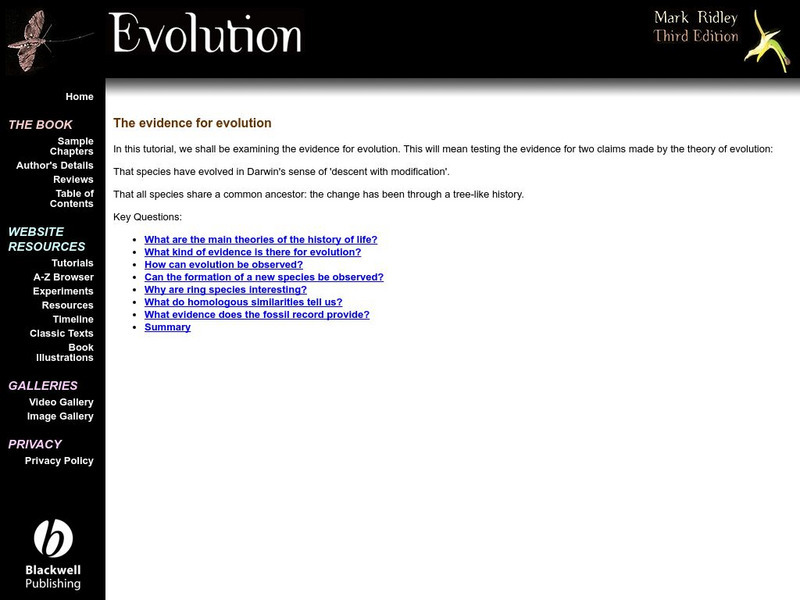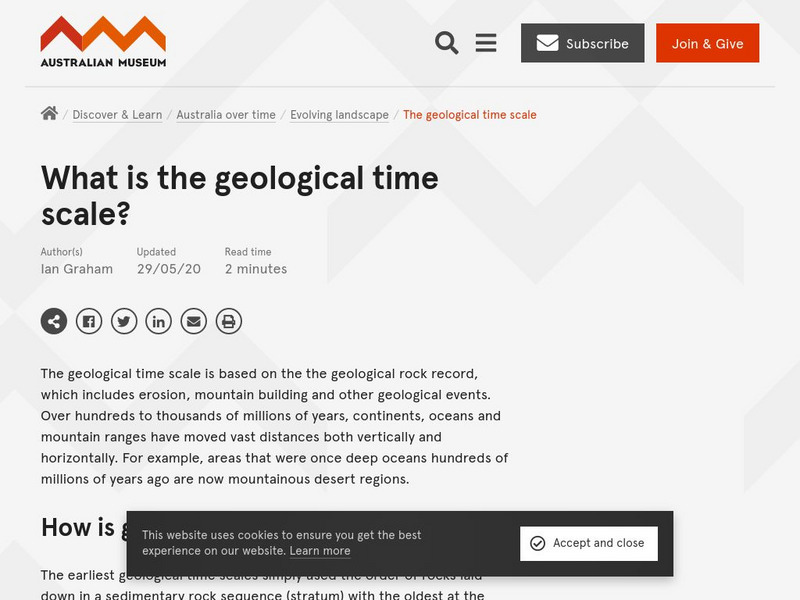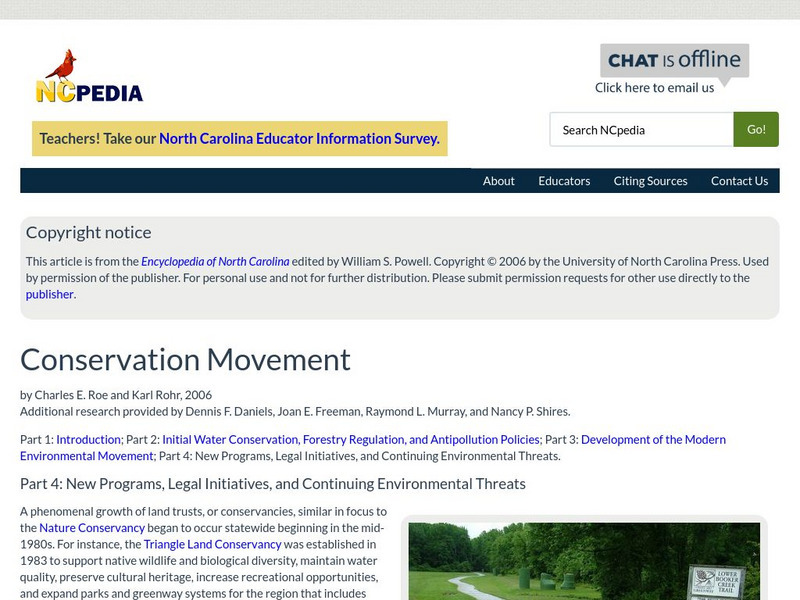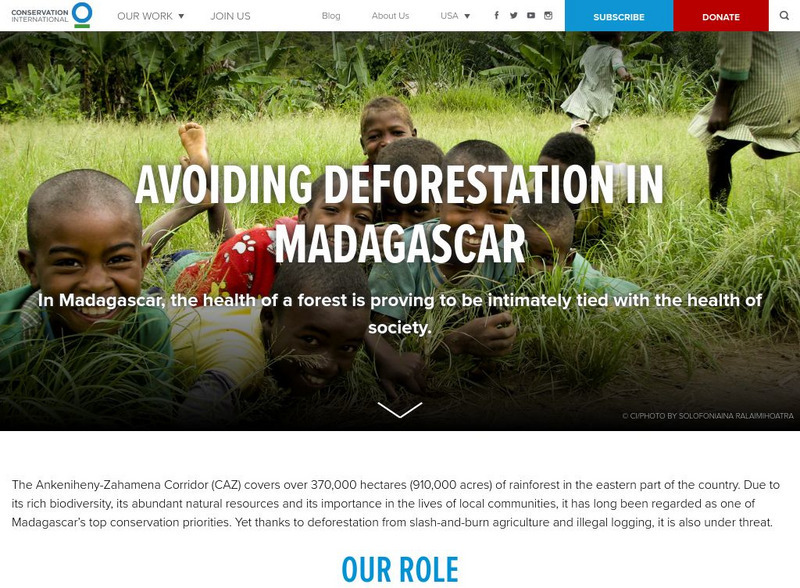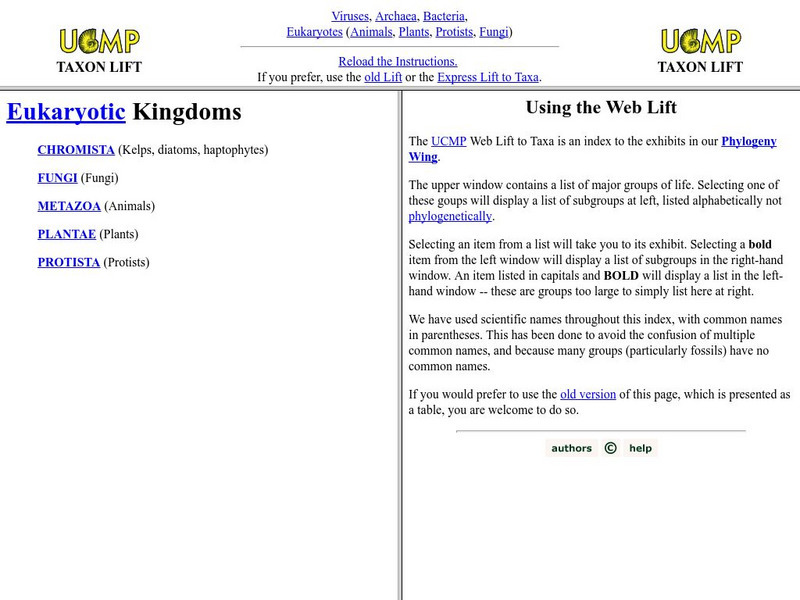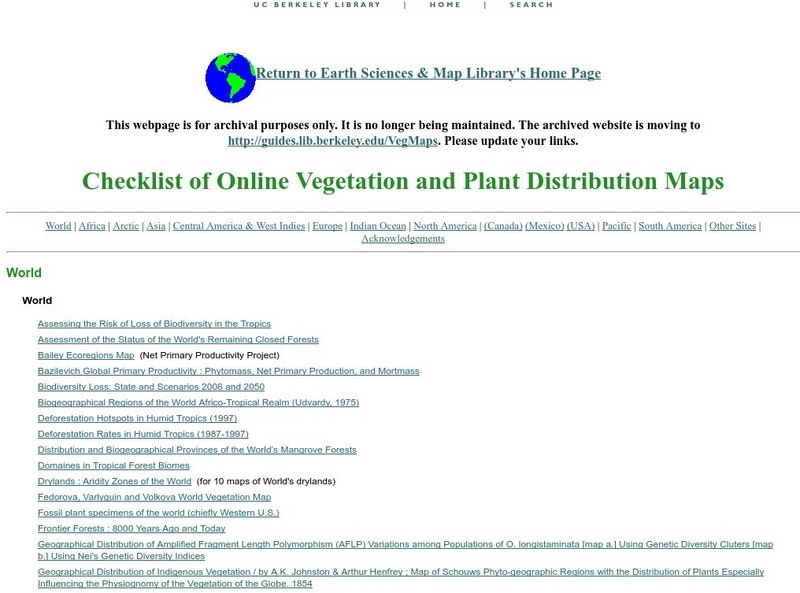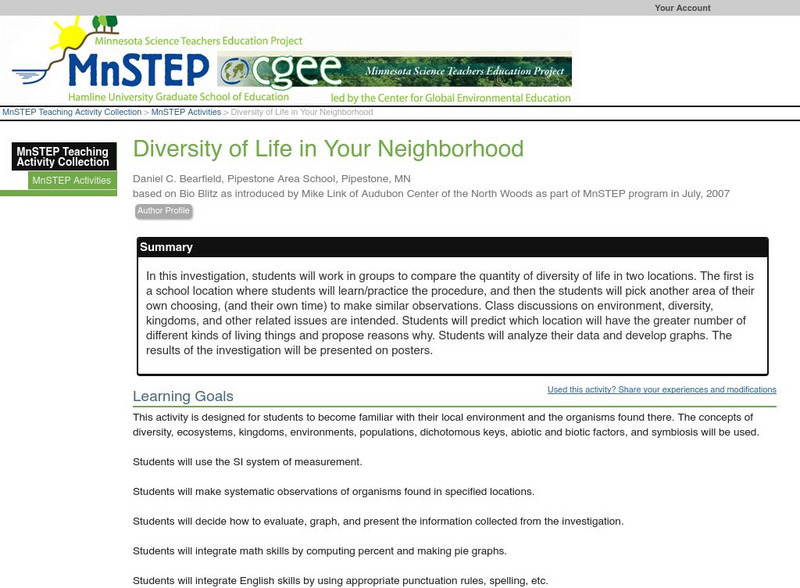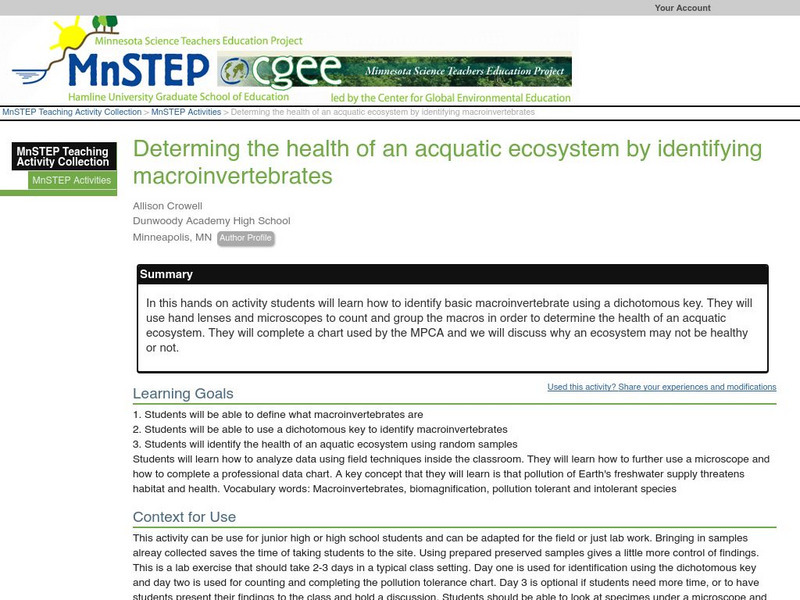Hi, what do you want to do?
Cornell Lab of Ornithology
Habitat Network: The Great Backyard Bird Count Group
Show off a local wonderful habitat by joining the Great-Backyard-Bird-Count group, and put the bird count data on your map.
Read Works
Read Works: Can the Amazon Be Saved?
[Free Registration/Login Required] Students read about the disappearing Amazon rain forest. A question sheet is available to help students build skills in cause and effect.
Other
The Evidence for Evolution
These pages are part of a site called "Evolution," that accompanies a textbook by the same name. Mark Ridley is the author, and in this section he discusses the evidence for evolution.
Australian Museum
Great Barrier Reef
A short description of the Great Barrier Reef of Australia. Included are pictures and a map. Learn what makes up a coral reef and the two different types.
Australian Museum
Australian Museum: The Geological Time Scale
What was Australia like during prehistoric times? Follow through history from 110 million years ago until the present and discover the different mammals, birds, and reptiles.
PBS
Pbs: Nature: The Fascinating World of Jellies
Learn about the mysterious jellyfish blooms that have occurred in the world's oceans. Because the resulting alteration to the marine food web has had devastating effects, researchers grow and study jellyfish at the Monterey aquarium....
University of Guelph
Fish of Canada: Introduction to Fish
Great site that provides all types of information on fish ranging from fish ecology to funky fish. Entails links to sites on fish evolution and morphology.
American Institute of Biological Sciences
Action Bioscience: Species, Speciation and the Environment
The American Institute of Biological Sciences offers this article by Niles Eldredge, evolutionary theorist and curator at the American Museum of Natural History. Eldredge begins with Darwin's theories and summarizes subsequent thought,...
Cosmo Learning
Cosmo Learning: Principles of Evolution, Ecology and Behavior
A collection of video lectures introducing beginning biology students to the principles of evolution, ecology, and behavior. The course was taught three times a week for a semester at Yale University. The course discusses concepts of...
State Library of North Carolina
N Cpedia: Concervation Movement: Programs and Initiatives
A phenomenal growth of land trusts or conservancies, similar in focus to the Nature Conservancy began to occur statewide beginning in the mid-1980s. For instance, the Triangle Land Conservancy was established in 1983 to support native...
PBS
Pbs Teachers: Scientific American: Expedition Panama: Bee Lines
Emulate the work of entomologists and explore biodiversity by collecting insects from different sites and keeping records of various populations. Develop a theory about insects and design a way to test it.
Ducksters
Ducksters: Science for Kids: World Biomes and Ecosystems
Kids learn about the world's biomes and ecosystems. The network of life and biodiversity needed for all to survive.
Smithsonian Institution
National Museum of Natural History: American Mammals: Baird's Pocket Gopher
Baird's Pocket Gopher is also known as the Louisiana Pocket Gopher, though most of what is known about its ecology has come from studies of the species near College Station, Texas, and it occurs in Oklahoma and Arkansas as well as in...
Science Struck
Science Struck: Abiotic Factors of the Rainforest
Abiotic factors, e.g., sunlight and precipitation, play a huge role in supporting biodiversity in a rainforest. This article discusses the features of rainforests and how abiotic factors affect the plants and animals that live there.
Other
Conservation International: Avoiding Deforestation in Madagascar
The Ankeniheny-Zahamena Corridor (CAZ) covers over 370,000 hectares (910,000 acres) of rainforest in the eastern part of Madagascar. Due to its rich biodiversity, its abundant natural resources and its importance in the lives of local...
E-learning for Kids
E Learning for Kids: Science: Caribbean Sea: Mexico: What Is Classifying?
Christina wants to classify all kinds of different things. Help her sort things into main groups.
University of California
Ucmp: Web Lift to Taxa
Alphabetical listing from the University of California of info on each of the animal phyla. Includes scientific and common names and photos. Characteristics of each group are explained in detail.
University of California
U.c. Berkeley Libraries: Plant Distribution Maps
This resource provides a list of online maps of world vegetation such as biomes, forests and plants.
Science Education Resource Center at Carleton College
Serc: Diversity of Life in Your Neighborhood
Students go outdoors to compare the diversity of life in two locations. Following the observations, hold class discussions on environment, diversity, kingdoms, and other related issues.
Science Education Resource Center at Carleton College
Serc: Identifying Macroinvertebrates to Determine Health of Aquatic Ecosystem
In this hands on activity students will learn how to identify basic macroinvertebrate using a dichotomous key. They will complete a chart used by the MPCA and we will discuss why an ecosystem may not be healthy or not.
Science Education Resource Center at Carleton College
Serc: How Biodiverse Is Lake Superior? An Exercise in Proportions
An exercise in critical thinking, as well as practice in percents, proportions, and probabilities. Students research to gather information, then use their math skills to perform calculations on the data.
PBS
Newton's Apple: Spotted Owls and Old Growth Forests
This site from Newton's Apple, which is a production of KTCA Twin Cities Public Television, provides insights, vocabulary, resources and a main activity on the subject of why owls are threatened.
TED Talks
Ted: Ted Ed: Why Are There So Many Types of Apples?
Have you ever walked into a grocery store and wondered where all the varieties of apples came from? Theresa Doud describes the ins and outs of breeding apples. [4:28]
TED Talks
Ted: Ted Ed: The Otherworldly Creatures in the Ocean's Deepest Depths
Although the deep ocean zone seems like an inhospitable and remote corner of the planet, it is actually one of the greatest habitats on Earth. Lidia Lins explores how so many species thrive in this mysterious underwater world. [5:02]
Other popular searches
- Biodiversity and Ecosystems
- Biodiversity in Forests
- Biodiversity Loss
- Insect Biodiversity
- Great Lakes Biodiversity
- Marine Biodiversity
- Biodiversity of Fish
- Climate and Biodiversity
- Global Biodiversity
- Hall of Biodiversity
- Biodiversity in Utah
- Biodiversity Bingo







